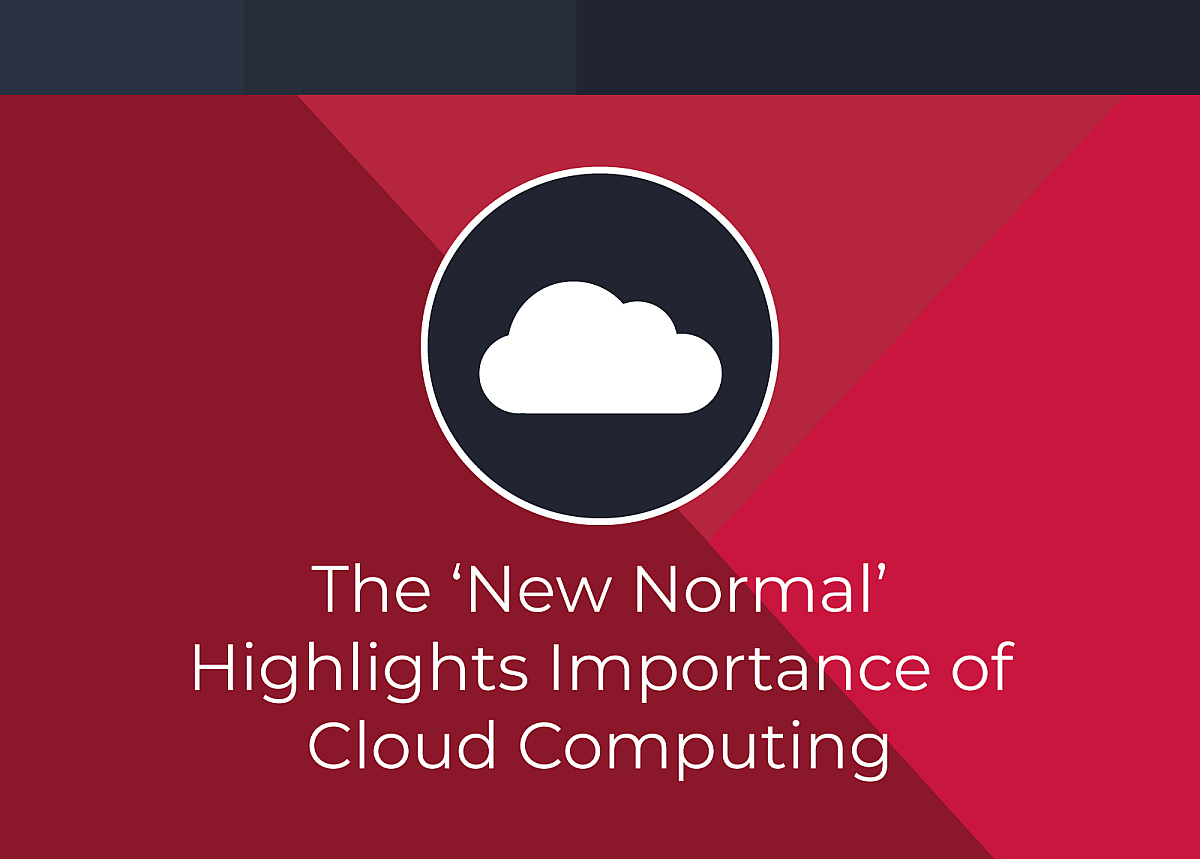
The ‘New Normal’ Highlights Importance of Cloud Computing
At the onset of the COVID-19 pandemic, cloud computing was already on the upswing and transforming business as we know it. Now, as businesses look toward a post-pandemic work environment all signs point toward continued growth in the “new norm.”
Whether the goal was to enhance data security, improve workflows and efficiencies, or leverage advanced technologies, cloud usage among organizations was moving at a rapid clip even before pandemic.
In fact, a January 2020 survey by O’Reilly, a provider of technology and business training, found that more than 88 percent of respondents said they use cloud in one form or another. And most respondents expected to grow their usage over the next 12 months.
Then the pandemic hit. Not surprisingly, the impacts of COVID-19 shifted cloud adoption rates into overdrive as many businesses were forced to go remote essentially overnight due to stay-at-home orders and mandated shutdowns. Now, it seems there’s no turning back as businesses look toward a post-pandemic future and seek a return on their investment in the cloud.
“My prediction is that, if anything, the next 12 months will see an even greater level of cloud adoption as businesses increasingly become digital. Having gone through the rapid shift to cloud-based systems and infrastructure businesses are unlikely to take a backwards step from the operational efficiency and financial flexibility they now have in place and instead are likely to double down on their investment,” Daniel Bailey, Investment Director at private equity firm ECI Partners, wrote in an ITProPortal.com blog post.
Furthermore, a study by Devo, a cloud-native logging and security analytics company, found that 41 percent of organiza¬tions have adopted a cloud-first policy, deploying new appli¬cations using public cloud services by default. Alternatively, only 14 percent of organizations maintain a policy where new applications are deployed using on-premises technology.
This doesn’t necessarily mean that these businesses will completely shutter their physical presence. Instead, a hybrid model — a combination of remote and on-site work — will likely become the new norm for many due, in part, to the importance of on-site training and corporate culture.
Underscoring this point, a recent McKinsey survey of executives across industries and geographies, found that 9-out-of-10 respondents said, post-pandemic, their organizations will be combining remote and on-site working.
This is good news for cloud computing. Regardless of their location, employees still need to be able to access the tools and resources needed to do their work efficiently and securely.
Making the Necessary Adjustments
Given that some of the dust has settled from the chaos of 2020, many businesses may now find themselves modifying the cloud deployments they rushed into at the onset of the pandemic to gain even greater efficiencies.
“Companies did what they had to do under unprecedented uncertainty and pressure to make it all work, but 2021 should hopefully give companies an opportunity to take a breath and make sure the cloud implementations they put in place are the right fit for the future of their business, not just for getting them through the chaos of 2020,” Blair Lyon, vice president of cloud experience at U.S.-based cloud hosting company Linode, was quoted as saying in a Computer Weekly article.
For businesses that haven’t done so already, this includesreimagining workflow processes to gain greater efficiencies, drive automation, and better collaborate with customers regardless of an employee’s location. After all, leveraging the cloud is not about doing what you’ve always done, just in the cloud.
Businesses will also want to ensure that the cloud solutions in place have robust integration capabilities. One of the benefits of using cloud-based applications is the fact that you can store and share data securely between software applications. This enables organizations to drive greater efficiencies through automation and build a suite of tailored best-in-class applications.
Therefore, it is important that an organization’s primary software application has strong support for data integration by making key data points easily accessible to third-party vendors, and providing support for both third-party vendors and customers.
Greatland’s Yearli.com is one example of using a best-in-class application to complement your primary software application. Some accounting applications leave much of the year-end W-2, 1099 and ACA filing work up to the user, such as uploading files to government agencies and printing and mailing forms to recipients. Yearli.com takes care of all of that, and provides a robust, secure, cloud-based platform with data integration capabilities. Yearli.com integrates with more than 25 accounting applications in a variety of industries, and uses a variety of methods, such as an API, to get data from your primary application.
It is also important to note that Yearli.com allows for Team Management, enabling users to create teams, user groups and assign role-based access control. This is a great way for groups working from home or the office to better collaborate and define specific roles and responsibilities wherever they are working.
Gateway to Greater Innovation
Aside from a more permanent shift to remote and hybrid work environments, the continued adoption of cloud computing will also be fueled by the growth and revenue-generating opportunities that can be achieved. What does this mean? The reality is that the cloud is the gateway to unlocking the power of advanced technologies like artificial learning and data analytics, and a growing number of software vendors are focusing their efforts on the advancement of the cloud.
“If you’re interested in leveraging technology that has the most funding and interest in the marketplace, the cloud is where it’s at. The more traditional on-premises systems are not getting the R&D love, and this results in lagging innovation, lagging quality, and higher licensing costs. Together, it’s a recipe for enterprises ditching these systems and moving to the cloud ASAP,” David Linthicum, industry expert and thought leader, wrote in an InfoWorld article.
Noted a Deloitte Insights article, “Cloud-based software and platforms help companies benefit from AI, even if they lack the expertise to build and train systems, or to manage data on their own. And according to our survey, AI early adopters are taking advantage. Many companies that aren’t using these technologies today plan to do so in the future.”
In summary, the adoption of cloud computing shows no signs of slowing. In fact, as businesses look toward a post-pandemic future all signs point toward continued growth in the “new norm.” Is your business among them?
Latest News
-
 November 25, 2025
November 25, 2025New Alternative Furnishing Method for Forms 1095-B and 1095-C Comes with Complexities
The IRS has updated the Affordable Care Act (ACA) reporting process for Forms 1095-B and 1095-C. These changes aim to reduce administrative costs and simplify reporting, but they also create new compliance challenges for employers and health insurance providers.Read More -
 October 8, 2025
October 8, 2025Your Business Guide to 1099 Filing in 2025: Deadlines and Compliance Tips with Yearli
Businesses must prepare for 2025 IRS 1099 filing by understanding key deadlines for Forms 1099-NEC and 1099-MISC and leveraging e-filing tools like Yearli to stay compliant. This guide outlines important dates, recent IRS updates, and practical tips to avoid penalties and streamline the filing process.Read More -
December 30, 2024
Understanding Form 1099-DA: A Comprehensive Guide to Filing for Digital Asset Transactions
As the use of digital assets like cryptocurrencies and non-fungible tokens (NFTs) continues to grow, so does the need for clear tax reporting guidelines. To address this, the IRS has introduced Form 1099-DA, which will be required starting in 2025.Read More
